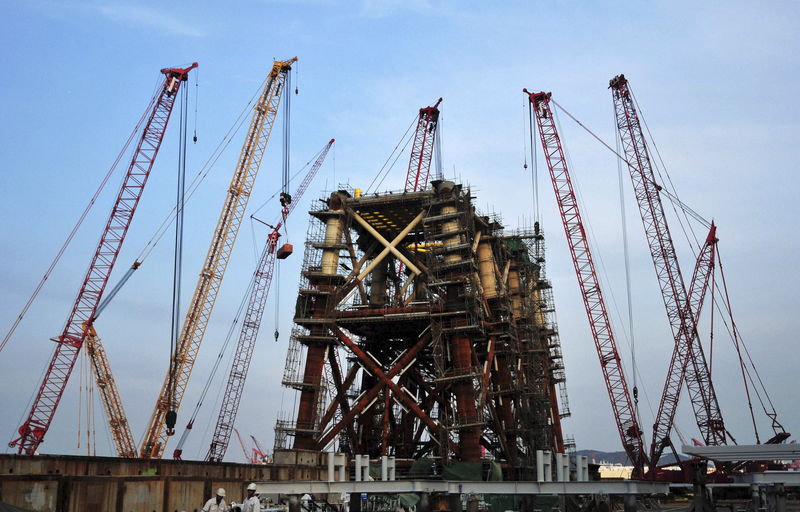By Muyu Xu
SINGAPORE (Reuters) – Appetite for Iranian crude is growing in China, the world’s biggest oil importer, after the extension of supply cuts by Saudi Arabia and Russia boosted global prices, while Tehran is stepping up output and exports despite U.S. sanctions.
Although China’s “teapots”, or small independent refiners, are stocking up on Iran’s discounted oil as they exploit robust margins to fill strong seasonal demand, big state refiners are still keeping away.
Iran’s crude exports of about 1.5 million barrels per day (bpd) stand at their highest in more than four years, with more than 80% shipped to China, data from consultancies FGE and Vortexa shows.
The export surge comes at a time when Washington and Tehran are working on prisoner swaps and ways to free up Iranian funds frozen overseas, leading some traders to speculate a softening of U.S. sanctions on Iranian crude could be in the offing.
“I think Iranians have been given unwritten confirmation … that there won’t be any further sanctions on the crude buyers as long as they are engaged in the unofficial negotiations,” said Iman Nasseri, managing director of FGE.
He added that China’s imports of Iranian crude could rise another 200,000 bpd to 300,000 bpd, from 1.2 million bpd to 1.3 million bpd now, if prices stay low, although volumes could be capped by buyers’ risk appetite and payment constraints.
The U.S. continues to enforce the sanctions on Iran’s oil and petrochemical industries, a senior State Department official told Reuters, adding that Iran’s sanctions evasion was costly.
“We assess that the regime receives only a fraction of the market price for the oil it is able to sell.”
Chinese state-owned enterprises had not resumed import and refining of Iranian oil because U.S. sanctions, and the threat of secondary sanctions, remain a deterrent, the official added.
Beijing has long said it opposes Washington’s “long-arm” jurisdiction, and has urged that sanctions on Iran be dropped.
Iran is exporting about 2 million bpd of as well as condensate and products, as Tehran has boosted production to nearly 3.6 million bpd, say people familiar with the matter, or near its maximum of about 4 million bpd.
Official Chinese data rarely reflects any Iranian oil imports, which are typically registered instead as shipments from Malaysia, Oman or other Middle Eastern countries.
“Washington is turning a blind eye to Iranian oil on the water,” said a trader who spoke on condition of anonymity.
Analysts have said Iran’s limited steps to slow its build-up of near-weapons-grade uranium may help ease tension with the United States, but there is no significant progress towards a wider nuclear deal before the 2024 U.S. elections.
TEAPOTS AND SANCTIONS
In China, traders and analysts say, Iranian oil is bought only by small-scale independent refineries, known as teapots, concentrated in the coastal province of Shandong.
State-owned refiners and major private refiners have avoided the trade since the U.S. re-imposed sanctions in 2019, they said.
Lured by steep discounts, the dozens of domestically-focused refiners source much of their feedstock from countries under Western sanctions, such as Iran, Russia and Venezuela, going through middlemen, trade sources said.
A handful of teapots that rely on Western technology or have deals with other suppliers avoid Iranian oil, however.
The cost-sensitive teapots are turning to Iran as Russian crude gets expensive, a trading source in Shandong said.
Russia’s light sweet ESPO last traded in early September at a premium of about 50 cents a barrel to ICE , while medium sour Urals crude was offered at a discount of about $1.50 to ICE Brent, traders said.
In contrast, Iranian Light and Iranian Heavy grades traded at wide discounts of about $13 a barrel and near $20, respectively, on a delivery ex-ship basis, they added.
Read the full article here





